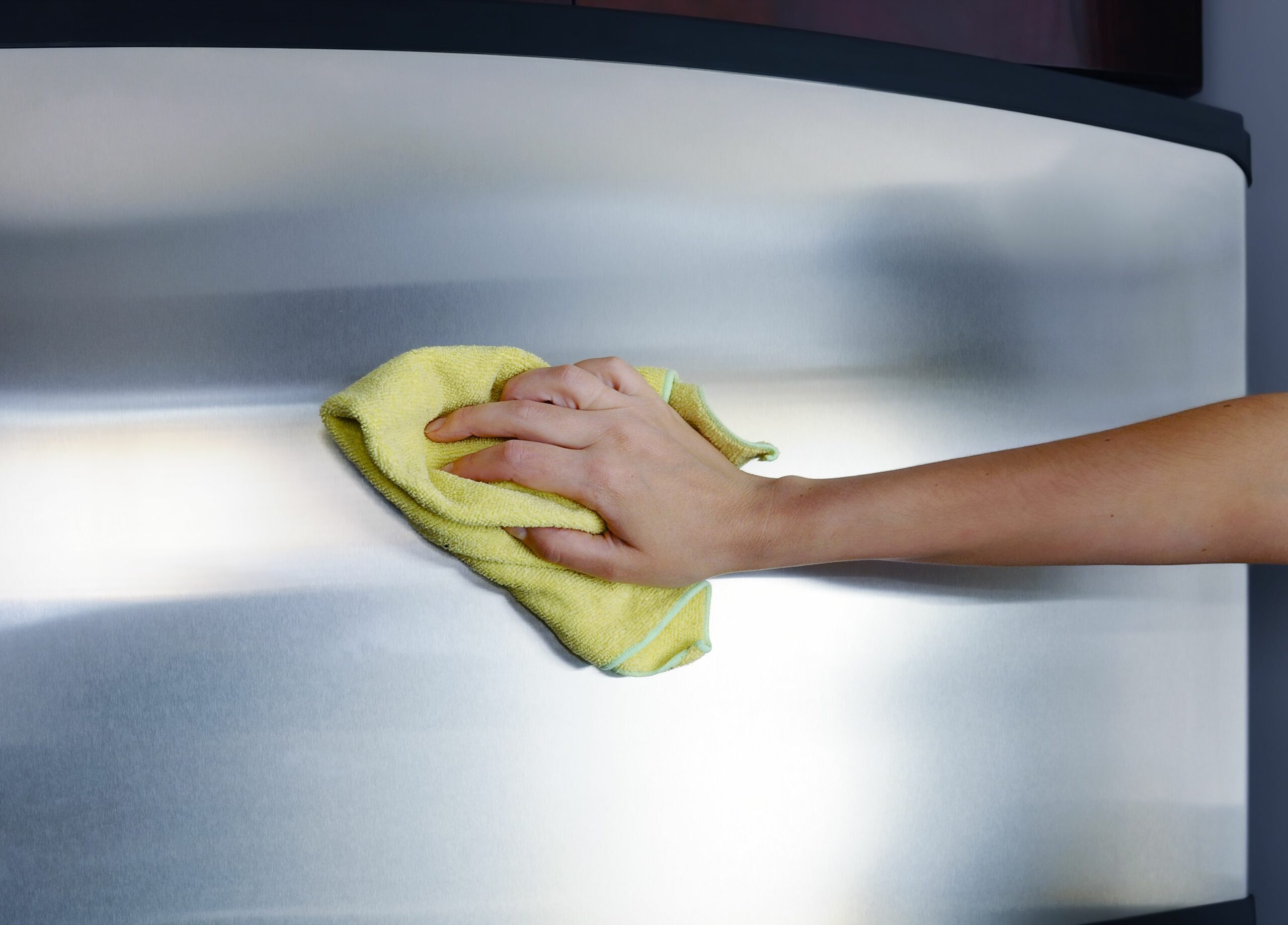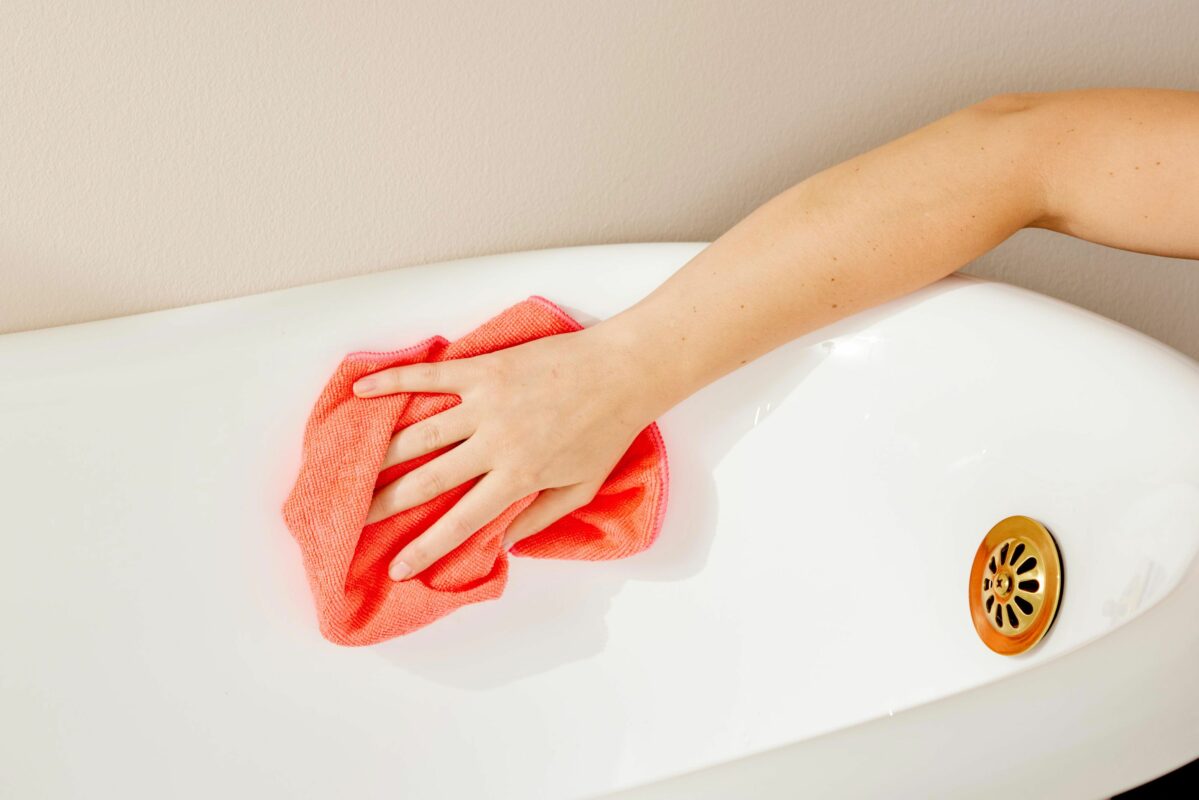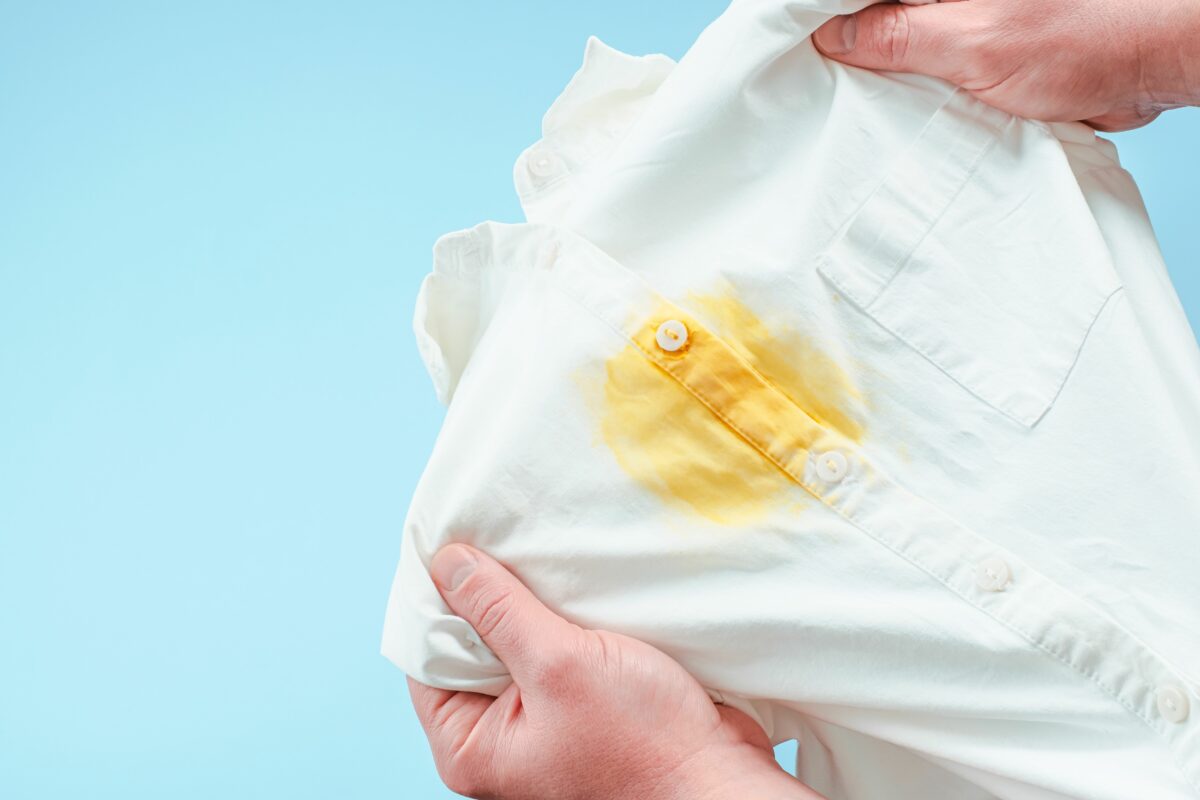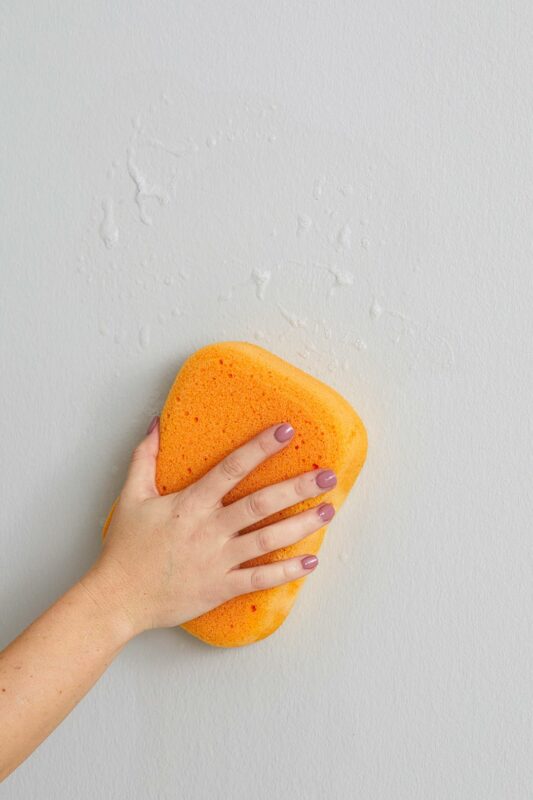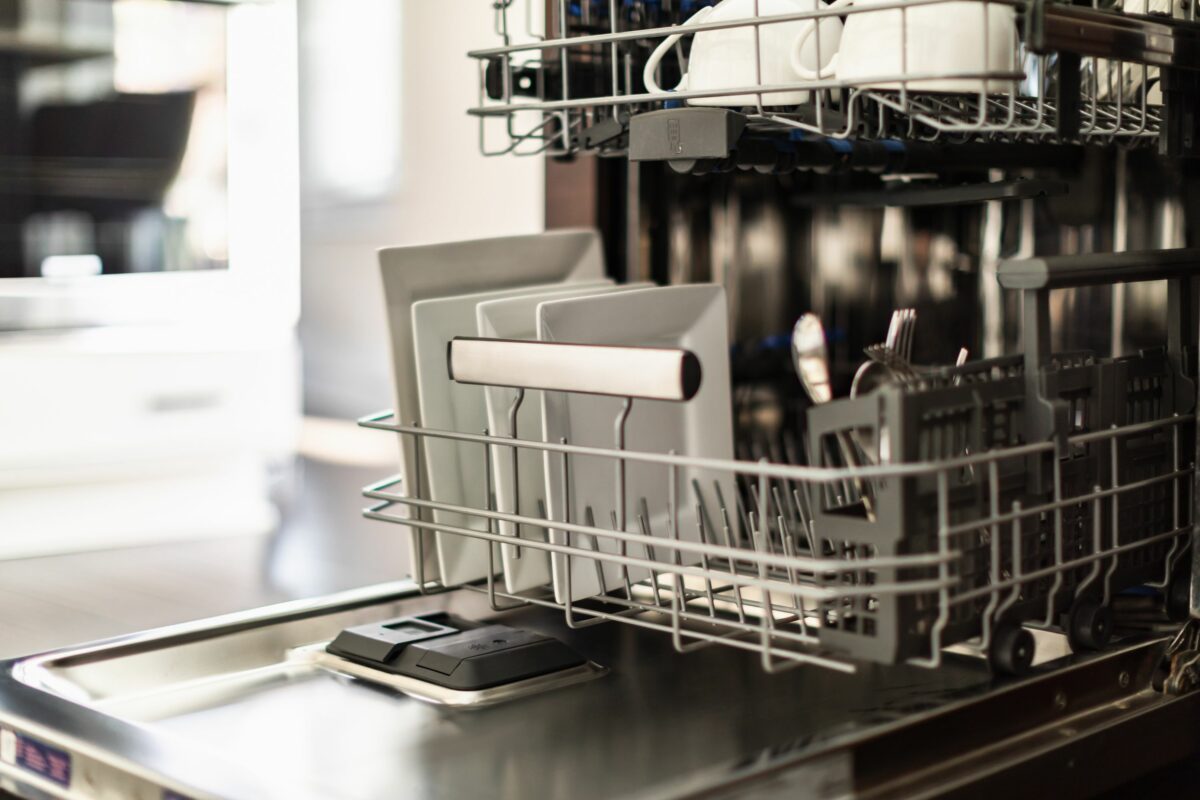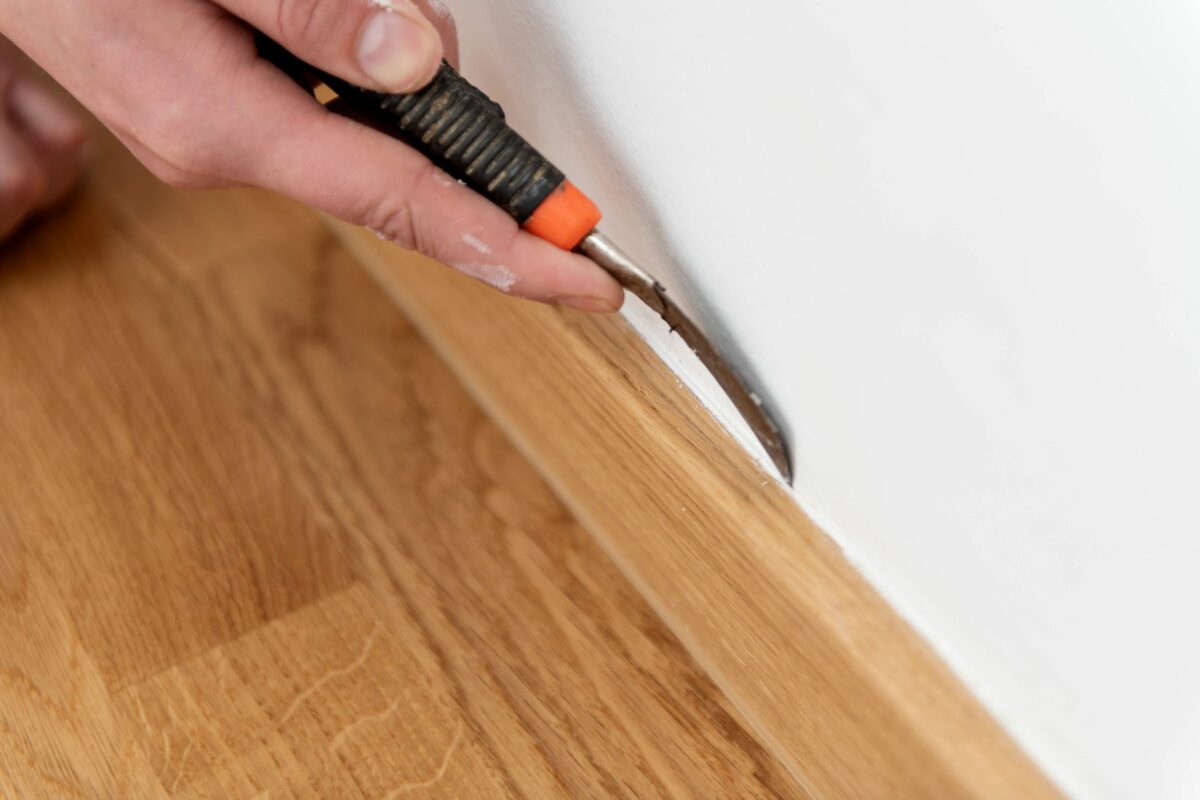Stainless-steel refrigerators, dishwashers, cookware, sinks, and countertops are trendy in today’s kitchens. Stainless steel is an alloy, a mixture of specific metals, primarily iron, chromium, nickel, and other elements. Chromium makes stainless steel non-corrosive and rust-resistant. It’s also heat- and bacteria-resistant, recyclable, and easy to clean.
However, despite its strength and resilience, stainless steel is not scratch-resistant. Rough handling, abrasive materials, or harsh cleaning techniques can damage the finish. If you don’t remove the scratches, they can trap bacteria and grime, leaving your stainless appliance or fixture unsightly. While gentle buffing can remove some light scratches, more effort may be required to remove deep scratches. Here is how to remove scratches from stainless steel.
Causes of Stainless-Steel Scratches
The most common reason scratches occur is improper cleaning. Using abrasive cleaning pads or harsh chemicals can leave scratches behind on appliances and cookware. Stainless-steel items can also be scratched when they rub against other metal objects, heavy items are dragged across a stainless-steel surface, and during regular wear and tear.
Determining the Severity of the Scratches
Stainless steel is used in many everyday items, including home appliances and a wide range of cookware, including pots, pans, cutlery, and utensils. Scratches are inevitable, but the severity of the scratches determines the removal method.
Light scratches appear as fine lines or minor scuffs visible in bright light. However, they are barely noticeable to the touch if you run your fingers over them. Such scratches are found in high-use areas. They can easily be removed using a store-bought, non-abrasive cleaner, non-gel toothpaste, or baking soda.
Deep scratches are visible and can be felt if you run your fingers over them and require heavy-duty methods to remove them.
If scratches are paired with dents, you may have to try a combination of repair methods.
Removing Light Stainless-Steel Scratches
Before removing scratches, consult the product’s user manual to determine the type of finish on your stainless-steel item. Stainless steel typically comes in shiny, brushed, matte, or black-painted finishes. If your appliance has a protective or synthetic finish, a specific commercial stainless-steel polish may be necessary to remove or hide the scratches.
These techniques work on uncoated stainless steel:
- Clean the surface using dishwashing soap or a mild detergent and water to remove any grime or grease, and then dry the area with a soft cloth.
- Choose a buffing compound. Numerous commercial stainless-steel scratch removers are available, or you can DIY one using a few drops of water and baking soda, a commercial rubbing compound, or non-gel toothpaste.
- Apply the buffing compound by dabbing a small amount into a damp cloth and rubbing it into the scratch along the stainless-steel grain. All finishes have a grain that runs up and down or side to side (verticle or horizontal). Working against the grain can cause irreversible damage.
- Buff the scratch using a damp microfiber cloth by applying gentle pressure and straight strokes along the grain. Do not use circular motions.
- Rinse the area using a dampened cloth to wipe away the paste.
- Lightly spray the surface with white vinegar, and then dry with a clean cloth to remove paste traces.
- Polish the stainless steel using a few drops of cooking oil and a microfiber cloth. Follow the grain and buff the surface for extra shine. Repeat as necessary.
Removing Deep Stainless-Steel Scratches
In the case of deep scratches, clean the surface using dishwashing soap or a mild detergent and water, and dry it thoroughly. Then, use a store-bought stainless-steel scratch removal kit, which typically contains abrasive pads, polishes, and detailed instructions.
As an alternative:
- Apply a few drops of cooking or olive oil to a scouring pad for uncoated stainless-steel surfaces.
- Work with the grain using moderate pressure to remove the scratch. You can also use fine-grit sandpaper (400–600 grit) soaked in water for several minutes and wrapped around a sanding block to lightly buff out the scratch, working in the direction of the grain.
- Clean the surface with white vinegar and a damp cloth to remove all the grit. Vinegar is an excellent chrome and stainless-steel polisher.
- Polish the surface with cooking oil.
Always work in a slightly larger area than the scratch to achieve a more uniform appearance.
Preventing Future Scratches
To prevent future scratches:
- Avoid cleaning stainless-steel items with harsh cleaning agents, such as ammonia, chlorine bleach, and scouring powders, which may cause or worsen scratches and cause discoloration.
- Use soft, non-abrasive cleaning materials, avoiding scrubbers and steel wool.
- Always wipe and clean in the direction of the stainless-steel grain. Don’t rub a cleaning cloth in circles or across the grain.
- Dry and buff the stainless-steel surfaces after every use to prevent mineral deposit build-up.
- Use cutting boards and mats to protect stainless-steel countertops and sink surfaces.


